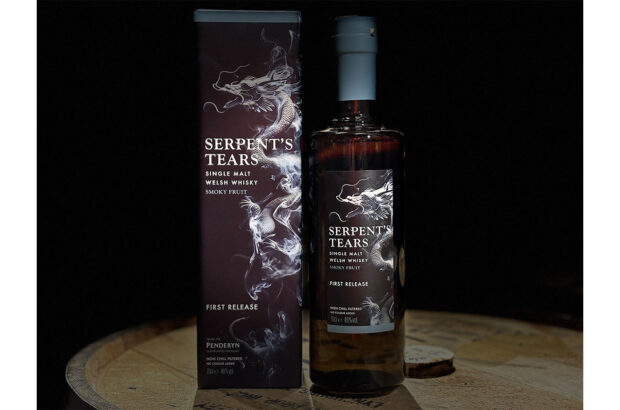Its production is tiny, its wines expensive and hard to find, yet – or should that be hence – Pomerol's Château Lafleur is one of its most revered properties. By James Lawther MW��
There are few great Bordeaux châteaux that induce the same mythical reverence as Pomerol’s Château Lafleur. A wine of depth, personality and legendary ageability, this is no johnny-come-lately to the high table of top growths, but one of assured pedigree. Well regarded from the late 19th century onwards, Pomerol’s Château Lafleur has nonetheless always been wrapped in a discretionary cloak. It is the ultimate insiders’ wine. But publicly, it remains more of an enigma.
There are mitigating factors. Very little wine is produced, a yearly average of 12,000 bottles of the grand vin. It is not involved in the razzmatazz of the Place de Bordeaux but sold via exclusive importers in the UK (John Armit) and Germany and the distribution network of J-P Moueix elsewhere. The price is high, recent vintages reaching beyond the Médoc first growths, and old bottles are hard to come by. But above all, the reserve of Pomerol’s Château Lafleur is its simplicity, the story of a plot of earth and the relatively modest folk who cultivate it.
‘Lafleur’s asset is its terroir, a single plot on the land registry in Pomerol,’ says the grey-haired, mustachioed owner, Jacques Guinaudeau. The 4.5ha (hectare) plot is located on Pomerol’s upper plateau, gloriously surrounded by the vineyards of Pétrus, La Fleur-Pétrus, Le Gay, Hosanna, and Vieux Château Certan. It’s this prime gravel-and-clay site that is responsible for the magic of Pomerol’s Château Lafleur.
https://www.decanter.com/features/pomerol-hidden-depths-248303/
It was Jacques Guinaudeau’s great, great-grandfather, Henri Greloud, who acquired the land in 1872. Already the owner of a number of Right Bank properties including Château Le Gay he decided to create a new château, naming the estate after the existing lieu-dit, Lafleur. A simple cellar with accommodation for a vigneron was built (visitors were received at Le Gay), the replica of a building across the road that now houses Château La Fleur-Pétrus.
https://www.decanter.com/premium/chateau-lafleur-vertical-393999/
Pomerol’s Château Lafleur passed to his son, Charles, in 1888 and was then purchased by a cousin, André Robin, in 1915. His daughters, Marie and Thérèse, inherited the estate in 1946 along with Château Le Gay which had also been passed down the family line. It was the wines produced during the two sisters’ period of ownership that gave the estate international renown – Robert Parker for one since eulogising the 1947, 1950 and 1975.
In 1984 Thérèse died and Marie leased the vineyard to her second cousin Jacques Guinaudeau and his wife Sylvie. Down-to-earth but meticulous, Jacques had until then managed (and still does) the family home and estate, Bordeaux Supérieur Château Grand Village.
The 1982 and 1983 vintages were made by Christian Moueix and oenologist Jean-Claude Berrouet but since 1985 The Guinaudeaus have run Lafleur and made the wines (with Berrouet continuing as consultant). On Marie’s death and following the sale of Château Le Gay, they were able to acquire the property outright in 2002 and have since been joined in the venture by their son, Baptiste.
Down to earth
The vineyard remains the focal point of the estate. Visually stony and as immaculate as a prize garden, there’s more than meets the naked eye. A diversity of soils includes a gravelly ridge to the north, sand and gravel to the east, a higher clay content to the south and, running diagonally across the vineyard, a narrow fault of richer, silty-sandy soils. It’s this composite mix that provides Lafleur with its originality, including a minerality and rigour sometimes more in tune with the Médoc than Pomerol.
The other important factor is the grape varieties, 50% Merlot and 50% Cabernet Franc, more often than not adjusted to 60/40 in the final blend. The high percentage of Cabernet Franc is unique in Pomerol, with only Vieux Château Certan coming anywhere near, and assists with the line and length of the wine, quality of tannins and complexity of bouquet, the Merlot providing a core of fruit, texture and substance.
The vineyard, too, is old. There’s a small parcel of pre-1956 vines near Pétrus but the majority were planted after the great freeze in 1958, 1959 and 1960. Both the Cabernet Franc and Merlot are mingled together but are now identified by tags. More recently separate parcels of the two varieties (totalling one hectare) were replanted in 1990 and 2000. The average yield (achieved in vintages such as 2001 and 2005) turns around 38 hl/ha.
Despite the quality of wine made during the Robin era the vineyard was not in the best of health when Jacques and Sylvie Guinaudeau took over. ‘We did a lot of work between 1985 and 1990 replanting the missing and diseased vines, correcting soil pH, improving trellising and putting in a system of drainage. So I reckon the vineyard actually reached a proper state of balance and maturity from about 1999,’ says Jacques Guinaudeau.
The winemaking remains relatively simple and still takes place in the original 19th-century cellar. ‘Great wines were made here before our arrival so we felt we needed to maintain the same continuity but apply more regularity. We also wanted to conserve the idea of vintage,’ explains Guinaudeau.
Change has come about, however, initially due to the difficulties of the 1987 vintage. A second wine was introduced that year, Pensées de Lafleur, and the whole crop classified down. Since then Pensées has become an established second label usually produced from grapes grown on the richer, siltier soils but with a form of selection and the same attention to detail as Lafleur, for which it represents a more readily accessible mirror image. Yearly production averages 5,000 bottles.
Other adjustments have been made at the harvest. ‘We began to think more about the quality and maturity of the grapes and started harvesting the Merlot and Cabernet Franc separately and introduced a severer system of selection at the vine,’ says Guinaudeau. The harvest now takes four to five days (not necessarily consecutive) with the selections and blending decisions made primarily in the vineyard.
Destemming was also initiated in the late 1980s. Since then the one major change in the cellars (where the wine is vinified in concrete) was the introduction of malolactic fermentation in barrel from 1991. Accordingly, 50% of the barrels are renewed each year, the wine spending 18 months maturing with a classic system of racking every three months.
With its freshness, complexity and serious demeanour, Lafleur is perhaps an atypical Pomerol. Its power and presence, though, can rival Pétrus in certain vintages. Has it changed in recent years? I’ve not had the privilege of tasting very old vintages but there’s probably a greater purity of fruit and quality of tannin today But the depth, rigour and intensity are the same as ever.
Pomerol’s Château Lafleur through the years
Chateau Lafleur
2004 (19)
A classically elegant wine. Deep purple hue. Great purity of fruit on nose and palate. Ripe, black cherry notes. Palate richly layered but balanced with a minerally freshness on the finish. Tannins firm, fine and long. 2012–35.
2003 (17.5)
Like Pensées this is a more open, exuberant style. The nose is already expressive with raspberry ‘Pinot’ notes while the palate is full, round, ripe and warm with prune and fig. Acidity is low but there’s a wisp of freshness on the finish. Plenty of charm. 2008–20.
2002 (18)
Again classic and harmonious in style but a touch more austere than the 2004 and not quite the same depth of matière. Nose fairly tight but with a note of blackcurrant. Palate medium bodied, crisp and focused. 2010–25.
2001 (19)
Difficult to follow the 2000 but this wine has always impressed me. Rather closed at present. Dark, intense, smoky fruit on the nose. Virile, powerful with a core of dark fruit on the palate and firm, fine tannic frame. Complex. 2008–30.
2000 (19.5)
All the power, density and complexity of a great wine. Deep purple. Nose ripe, almost exotic – dark fruit, spice and mocha. Rich and exuberant on the palate but at a perfect pitch. Beautifully layered fruit, matted tannins. Amazing length and freshness on the finish. 2008–40.
1999 (18)
Exceptionally good for a difficult year. Has unexpected power and structure. Relatively closed but with a volume of dark fruit. Palate has dense fruit combined with steely tannins. Minerally freshness on the finish. 2010–30. £595 (case of 6 in bond); Arm
1998 (18.5)
Deep garnet hue. Nose quite open with a sweet ripeness about the fruit, and chocolate, cassis notes. Palate smooth, defined with tannic backbone and trademark minerality but I expected a little more depth, intensity and sparkle from this vintage. Still a solid wine for long ageing. 2010–35.
1996 (17.5)
Lighter garnet hue. A leaner but still elegant wine. Nose has a minerally austerity with just a note of mint. Medium bodied, the palate is fresh, linear and precise but lacks the volume of a top year. Up to 2016. £550 (case of 6); Arm
1995 (19)
Wonderfully, complex, aristocratic wine. Deep garnet colour. Tremendous depth on the nose with dark fruit, liquorice and spice notes. A superb palate with an intensity of flavour and extract, powerful tannic frame and great length. Has real presence. 2007–30.
1989 (19)
Big, brooding, powerful wine, characteristic of the year. Nose warm, ripe with plum and fig notes. Palate full bodied, robust, almost méridional with firm, crunchy tannins, huge matière and warm, alcoholic glow on the finish. Massive, reined-in power. Up to 2030.
1988 (18)
Fine, classic style, slightly austere. Minerally freshness with mint and liquorice notes on the nose. Palate minerally and ethereal. Up to 2015.
1986 (18.5)
Garnet core running to brick. Mature nose with a touch of oxidative complexity. Liquorice, truffle and tobacco notes. Very expressive. Palate full, firm and aromatic with grainy, robust tannins. Up to 2015.
Pensees de Lafleur
2004 (17)
Elegant style. Notes of violet. Palate fresh, harmonious with fine texture and crisp tannins. 2009–16.
2003 (16.5)
100% Merlot. More forward and showy. Round, ripe and warm. Plummy fruit with toasted oak apparent. Less precision than 2004. 2007–13.
2000 (18)
Dark hue. Lively, vibrant nose. Impressive depth for a second wine. A hint of the power of the grand vin. Good length. Oak perhaps a touch heavy. 2007–18. £350 (case of 6); Arm
1995 (18)
Belies its age. Intense, dark, smoky fruit on the nose. Good concentration on the palate. Chocolate notes and a leafy hint. Minerally length and finesse. Up to 2010.
1987 (16.5)
Reached the limits of oxidation but good for the vintage. Pale brick hue. Evolved red berry, leather and tobacco nose. Palate drying but a touch of sweetness. Drink now.







